#80s shojo manga
Text

Hanamaru Company (1988) by Nami Akimoto
40 notes
·
View notes
Text
Why is this manga so underrated?

Mayme from "Mayme Angel" (1979-1981) by Yumiko Igarashi
#mayme#mayme angel#johnny#jodie warren#beverly warren#mayme warren#louise warren#mr darnell#dana darnell#armand#shojo manga#shojo#shoujo manga#shoujo#manga#70s shojo manga#70s manga#70s shojo#70s shoujo#70s#80s shoujo#80s anime#80s manga#80s shojo manga#80s shojo#80s shoujo manga#70s shoujo manga
9 notes
·
View notes
Text
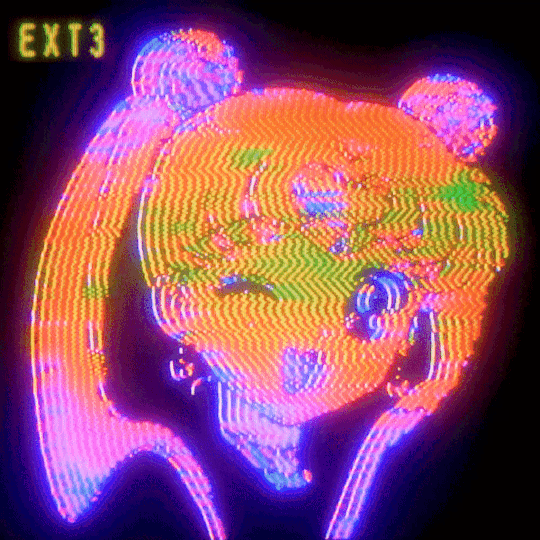
#vaporwave#manga#polygon1993#glitch art#anime#anime and manga#anime aesthetic#retro#90s#80s#sailor moon#art#shojo
4K notes
·
View notes
Text
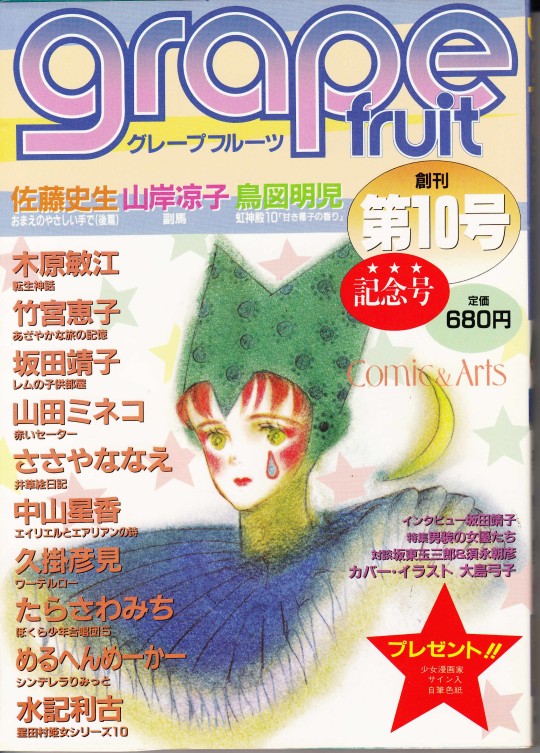
Grapefruit (グレープフルーツ) / Shinshokan (新書館) / Issue #10 (Jun 1983)
790 notes
·
View notes
Text
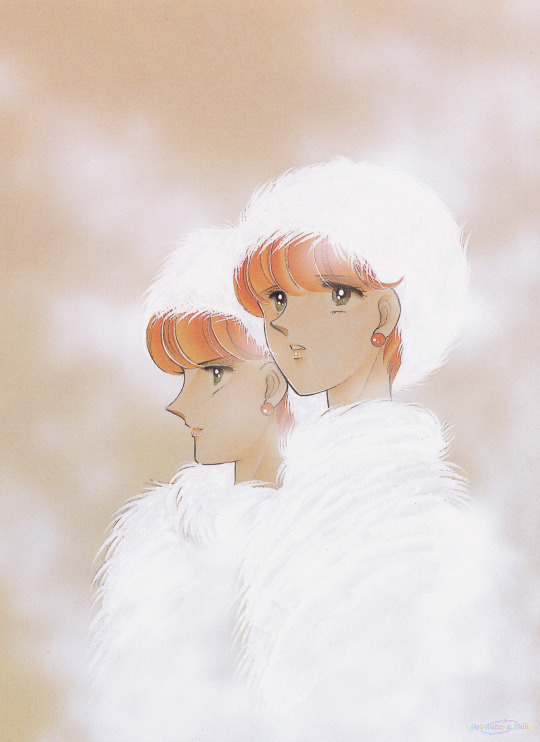
Series: Umi no Yami, Tsuki no Kage
Artist: Shinohara Chie
Publication: ‘Umi no Yami… Shinohara Chie Illust Shuu’ (09/1991)
Source: Scanned from my personal collection
#umi no yami tsuki no kage#darkness of the sea shadow of the moon#kobayakawa ruka#kobayakawa rumi#shinohara chie#chie shinohara#scan: hotwaterandmilk#art book#art book scans#artbook scans#80s manga#90s manga#shoujo manga#shoujo#shojo manga#shojo#horror manga#retro manga#classic manga#manga fashion#winter vibes
142 notes
·
View notes
Text
A brief history of Shojo manga and anime [part 1]
Shojo is a demographic that its target audience is mainly girls and young women. It has grown many generations and continues to do so. Many believe that it’s not as interesting as Shonen, but actually Shojo has a rich history and background. In this article of two parts, a brief history of shojo is going to be examined; analysing the art, tropes, plots and evolution.
Post-War Shojo


In order to fully examine shojo manga, firstly it needs to be noted that for a few decades before the Second World War, shojo magazines appeared, slowly creating the aesthetic of the girlish teen culture, still maintaining the dreamy, flowery maiden-ish style.
In the 1950s the plots of shojo manga seemed to be limited on stories about elementary school girls, decreasing plots that older girls and young women would be interested in. Also, almost all the mangakas were men, so the storytelling was focusing on what men perceived the morals of female should be. Apart from that, a few iconic shojo manga made their debuts, including Osamu Tezuka’s “Princess Knight”, which set the ground for many action shojo afterwards and which is still influential today. It was also the first shojo manga that had an anime adaptation, with an art influenced from Disney. Nevertheless, the shojo manga art style was still indifferent from the rest of the demographics.
But the shojo art style had slowly started changing. Nakahara Jun’ichi was working in a girls’ magazine in the 40s and was the one who introduced the shojo-style eyes. Macoto Takahashi was the one who took inspiration from this style and started drawing it in his manga. By the late 1950s, sparkling eyes and three panels with an one-piece character on the side -characteristics that are integral in the shojo demographic-, were more and more standard. “Sakura Namiki”, by the same mangaka is one of his most known stories, where its art style seemed like a story book, but the characters and the decorations were very much shojo, though it goes back to pre-war Class S”, when there weren’t stories focused on female and male romantic relationships, and instead of that, they focused on relationships between girls, that usually remained spiritual and platonic. “Arashi O Kete” also by Macoto Takahashi is a good example of creating the dynamic presentation of shojo.
By the mid 1950s, many shojo magazines started forming and some of them focused exclusively on shojo stories. Kodancha, Shueisha and Ribon were the most popular.
60s


In the 1960s, a change is that from monthly, many shojo magazines switched to weekly, increasing the shojo stories. Magazines had also allowed readers to submit their manga for publications, thus many amateur artists became professional mangakas. By the mid and late 1960s, many young women made their debuts in the manga industry, slowly forming a circle of creating stories by women for women, something that was rare up until then. Shojo friend and Margaret were two shojo magazines that were formed back then.
Nishitani’s Yoshiko “Mary Lou” is a very important example, as it was the first shojo manga with the romantic comedy formula, featuring normal characters in a normal school. The win of women’s volleyball team in the Olympics, inspired Chikako Urano to write “Attack no. 1”, the first female sports shojo manga. Portraying girls in taking part in other more “masculine” sports in manga was new back then, as it was more standard for female characters to be portrayed performing ballet or horseback riding. It also became an anime television show.
Hideko Mizuno was the first to adapt ideas from American television movies and series, such as “Sabrina”, as “Sutekina Cora”, though previously there was a shojo anime series called “Sally the witch”, which was inspired from “Bewitched”. Other magical girls anime were “Himitsu no Akko-Chan”, where on contrary to Sally, who was a witch from the beginning, the heroine had magic accessories to transform, marking the start of the evolution of magical girls transformation.
In the late 1960s, serious issues started being more examined in shojo manga, as Yumiko’s Oshima Oshima “Tanjou” deals with an unwanted pregnancy of a teenage girl, dealing with the question of abortion. Hideko Mizuno’s manga “Fire!” is an interesting mention as it has a male lead as the main character, portraying the soul of the music in the late 1960s. It was also the first shojo manga that contained sex scenes. On contrary with the 1950s restraining portrayal of emotions, along with the 1960s more mature content in shojo manga, the panels were emotional-driven and the characters were portrayed with an outburst of emotions.
70s


During the late 1960s and early 1970s, the second wave of feminism started spreading and with this, combined with the readers who grew up to young women, demanding variety in plots, an emergence of more complex and graphic stories appeared. The storytelling had the tendency to be extremely melodramatic and romantic but with a dose of pessimism. Realism and logic was many times missing, and passion, emotions and feelings were pretty intense. It was also the start of sub plots. 70s Shojo manga is a beautiful, flowery, epic journey that is unforgettable. It’s pretty much the golden era of shojo, filled with many complex themes, more so than any other era after.
As it’s natural, shojo is a synonym for romance, so the romance genre was always present. Unlike the previous decades though, epic romances came and replaced the everyday life, simple stories. Period dramas especially, became very popular. Classics such as Ryoko Ikeda’s “The Rose Of Versailles”, which elegantly mixes facts and fiction of the French Revolution, Yumiko Igarashi’s ode to the orphan genre “Candy Candy” and Waki Yamato’s love letter to feminism and romance “Haikara-san ga Toru” are great examples of this. Each one of those also had their own television show. Those stories have in common the fact that their plots are as complex as their characters. They have the tendency to have many things going on simultaneously, with a cast of many characters and with strong female leads. In many ways they were inspired from classical literature, both international and Japanese. The mixture of 70s shojo tropes, such as tragical events, melodrama, over the top situations, along with inspiration from the classics, makes those stories an irresistible package of shojo. Being driven by emotions and drama, a variety of over the top portrayal of facial expressions and movements were very much presented.
The sports genre wasn’t missing from the shojo portfolio, as after Urano Chikako’s “Attack number #1”’s success, the following of other titles such as Sunika Yamamoto’s manga about tennis, “Aim for the ace” was pretty logical. Even though sports is a word that can describe only its area, ballet and acting can still fit this genre, as the physical determination of the heroines is pretty much the same (Ballet is a sport too though, but it contains acting too). So, Suzue Miuchi’s classical story about acting; “Glass Mask” and Kyoko Ariyoshi’s “Swan” are great examples of this. “Glass Mask” is still ongoing, marking the longest running shojo manga of all time. It also has several anime adaptations, from the passing decades, with many differences in aesthetic and technology. This legendary manga has its main focus in acting, different acting techniques and character grown. Its uniqueness also lies to the fact that there are many stories inside the story, as the reader gets to experience different plots from all the theatrical plays that are featured in the manga. This genre also emphasises on relationships that are not romantic, on contrary to most of shojo manga, as its main focus is rivalries and, team spirit and characters building a bond with each other or a mutual respect, through their same passion for their work.
There is a variety of stories in the sci-fi genre also, with Moto Hagio’s “They were Eleven” and Keiko Takemiya’s “Toward the Terra”, being two of the most iconic. Though the sci-fi genre can be all about futurism, so as the time goes by, older sci-fi stories may be considered as dated, it’s still interesting to see through those stories how people of that time were perceiving the “future” through art and storytelling.
The first isekai Shojo, that has period drama and fantasy elements is Ouke no Monshou by Chieko Hosokawa, that is one of the longest running shojo manga.
The horror genre is interesting as well. Ashibe Yuuho’s “The bride of Deimos” is the most characteristic mention of this genre, that mixes horror, romance and mythology. Watanabe Masako’s “Saint Rosalind” is also a horror manga, with gothic elements. Moto Hagio’s epic vampire story “The Poe Clan” follows the tradition of classical gothic literature with a pretty, fashionable cast of characters.
The most iconic characteristic of the 70s shojo is the “24 year group”, which is the definition of various female mangakas who made their debut in the late 60s and who explored themes that were heavier than the average. Shojo ai and Shonen ai were pretty popular back then among the shojo genre’s audience, so such stories were too. Moto Hagio’s “Heart of Thomas”, Keiko Takemiya’s “Kaze To Ki No Uta”and Ryoko Ikeda’s “Oniisama e” are one of the most popular titles. Moto Hagio was the one that introduced the early 20th century boarding school formula in the Shonen Ai genre, with androgynous boys and elegant girls. Stories with this formula, both in shonen ai and shojo ai, featured tortured characters in a complex plot, or characters who became evolved with the problems of other characters and which affected them too. It needs to be noted that the one-shot manga “Shiroi Heya no Futari”, is considered to be the first Yuri manga that has ever been published. Stories about homosexuality often had a sad ending, with their characters doomed to die tragically, or to never see each other again. Apart from those genres, the 24 year group examined other serious issues too, such as philosophy and psychology. Yumiko Ooshima’s “Banana bread pudding” is an interesting example, as it explores mental illness and existential questions.
The art was all about elegance. The panels were simple, but many times the characters were fleeing from the traditional panels and their whole silhouette was showing from closer. The background was filled with flowery decorations and stars, as it escorted the inner monologue of the characters, that co-existed with the dialogues. The characters had thin and tall body types, the girls were pretty and men were handsome and sometimes androgynous. Their facial expressions were very intense in order for their thoughts and feelings to be emphasised; galaxy eyes, devious smiles and laughs, fatal posses and lots of crying were pretty common. The eyes were as sparkling as they can get, with stars drawn inside of them, or dramatic white eyes. The hair was bushy and the clothing was dashing, many times inspired from inter war era or Belle Époque, giving an undefined date. In “Oniisama e” and “Glass Mask” for example, many looks, such as dresses with puffed sleeves and accessories, give the impression that they were inspired from an older time, boosting the prestige of certain characters. The coquette aesthetic was always reflected in the fashion of the characters, with pastel airy dresses, hats with ribbons and patent leather shoes.
The anime art style was similar, though anime techniques were still premature, so there weren’t many details in the art. Osamu Dezaki was the one who designed “The Rose Of Versailles” and “Oniisama E” anime art, with the curly airy hair, sharp eyes and sparkles and his influence in art was visible in other shojo anime as well, for example “Glass Mask”. “Candy Candy” had a total of 115 episodes, on contrary to the manga which had only 9 volumes. Candy Candy” and “Haikara San Ga Toru” anime adaptations had a mixed aesthetic from both of the early 20th century, where they take place and the 1970s, being historically inaccurate in many ways, but for that reason, charming in their own way.
Toei animation produced many magical girl series collectively known as the “Majokko series” meaning “little witch”, with series such as “Mahotsukai Chappy”, “Miracle Girl Limit-chan” and “Majokko Megu-Chan”. The latter was the anime that gave the genre its name and influenced major magical girl stories that followed from then onwards. The magical girl formula was still that of a little girl gaining powers and doing everyday activities or saving the city at some point of the story.
80s


The 1980s was the decade of pop culture from music and movies, to clothes. So the influence from all this media on shojo manga was clear.
After the success of 24 year group, with its complex stories, artists continued making stories that fitted the genre. But as the growing markets grew, shojo magazines were more demanding to diverse plots. Stories slowly started being more direct and simple, on oppose to epic romances of the past.
The art style became more simple and the dreamy, coquettish, doll like style, started decreasing, as the pop style with the influence from pop culture started rising. A more modern approach in clothes began, with plots supporting the pop rock fashion. Tada Kaoru’s “Aishite Knight” is a story with romance and rock music, with some of characters having wavy hairstyles with blonde, red and purple colours and colourful, flashy clothes. It also had its own anime tv show, transferring the 80s colours and bringing to life the music that fitted the story.
“Tokimeki Tonight” by Koi Ikeno, is perhaps the most read 80s shojo manga, which also became an anime TV show. The colour palettes and the clothing in the anime were nostalgic even in that era, as it mixed both the late 70s early 80s fashion. The story is about vampires and other monsters, but it’s also a slice of life romantic comedy, mixing creatively the epic difficulties that the characters have to face, with a more comedic and less serious approach. Another supernatural popular shojo manga during the 80s, as an honourable mention, that on contrary is a horror, is Junji Ito’s “Tomie”.
Other stories kept the epic melodrama and romance in the same tone as the 70s. Michiyo Akaishi’s “Alpen Rose”, mixes the orphan genre, with history, mystery and romance, keeping the refined fashion of the 70s shojo manga, yet adopting the 80s hairstyles. Yumiko Igarashi’s “Lady Georgie” is also a period drama soap opera, with Victorian era fashion and bishonen characters. Those manga also had their own anime tv shows.
Shonen Ai were still popular, though the early 20th century boarding school genre decreased and got replaced with modern era stories. Akimi Yoshida’s “Banana Fish” is the most significant example, about two doomed lovers, associated with a gang in New York City.
During the mid 80s, the magical girls genre started becoming more popular with studio Pierrot’s four anime series; “Creamy Mami, The Magical Angel”, “Pastel Yumi, The Magic Idol”,“Persia, The Magic Fairy” and “Magical Emi, The Magical Star”, all similar to “Magical Princess Minky Momo”. All those shows were about young girls, who gained the ability to transform into grown up model versions of themselves, becoming music idols and saving the world. They all wear colourful dresses, with tutu skirts, ribbons in their hair and shirts and most importantly, powers associated with bubbles, stars and flowers and cute, childlike, colourful accessories, such as magic watches, bracelets and necklaces. They all emphasised in music, as city pop was rising at that time, meaning that there were many songs in the shows.
238 notes
·
View notes
Text
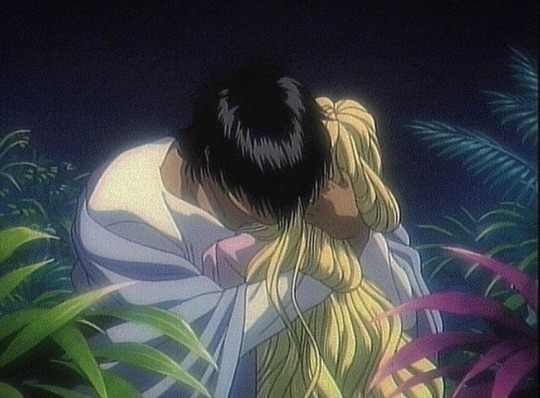
(need to be held like this)
• ova: please save my earth, 1993 <shoujo. scifi.>
#please save my earth#please save my earth anime#saki hiwatari#anime movie#anime 90s#scifi shoujo#shoujo#yamazaki kazuo#anime lovers#80s manga#90s shojo
2 notes
·
View notes
Text
Crystal Dragon, Volume 13, Chapter 53

2 notes
·
View notes
Text

Marie Antoinette - La rose de Versailles
#la rose de versailles#The Rose of Versailles#marie antoinette#lady oscar#Riyoko Ikeda#shojo manga#retro manga#80s manga#ベルサイユのばら#Berusaiyu no bara#manga cap#berubara#versailles no bara#shoujo#la rosa de versalles#rosadeversalhes#shoujo manga#manga#monochrome#manga panel#manga page#mangaedit#mangacap#edits*#i was uncertain about the bg#to delete it or not#and i whitened it#still not sure about it
51 notes
·
View notes
Text
“Please Save My Earth” vol. 1 by Saki Hiwatari
TLDR: 7/10
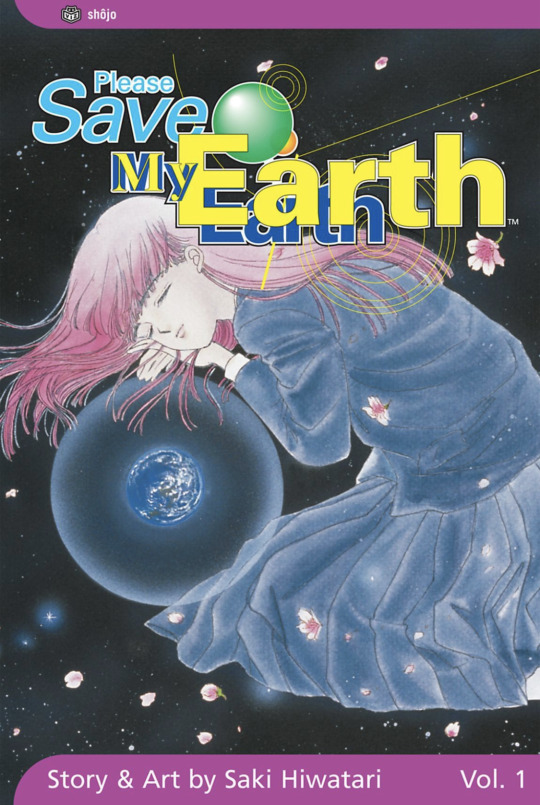
~~~~~~~~~~~~~~~~~~~~~~~~~~~~~~~~~~~~~~~~~~~
“Please Save My Earth” is another expensive title to collect physically. I would recommend buying the Kindle edition instead. As it is $6-$7 a book. Getting an entire set once again hits that $1000-$2000 price range if you insist on a physical.
I’ll be honest, I’m only reading this “classic” late 80s manga (with an anime adaptation) because of its relationship with Sonic The Hedgehog! But why? And how is it related?
Apparently this manga had a significant influence on Shiro Maekawa. (A former writer at SEGA and Sonic Team.) and this is what inspired specific writing choices on Sonic Adventure 2 (The space colony ark and Maria specifically) and particular scenes with Shadow and Maria together on the ark. Apparently the voice actor of the main character Alice in the anime adaptation was also the voice of Maria. Which Maekawa described as destiny, and that’s hard to disagree with.
I’m a girl who practically wants to be a Sonic The Hedgehog archivist. I’ve practically experienced all the media Sonic has had on offer and I like reading inspirations and source materials, even if they aren’t Sonic related. I’m hyper fixation to the max.
So does that mean I automatically like this tale of alien scientists who have reincarnated and been born as humans on earth? As their past lives start to overlap with their current ones as it leads to drama and heartbreak?
Ehhh. It’s fine. It’s skippable if you only care about Sonic. But if you like retro manga, I’d give you a positive maybe. And I do like retro manga. So.
The inspiration on Sonic Adventure 2 becomes immediately obvious. But it does a few things that’s… weird. There’s also elements that just plain haven’t aged well. Some of which is ignorable and some of which really isn’t.
But let’s talk about why!
~~~~~~~~~~~~~~~~~~~~~~~~~~~~~~~~~~~~~~~~~~~
Detailed spoilers ahead:
Here’s some music while you read because I have a LOT to say:
First let’s talk about the art and my final thoughts on its relationship with Sonic Adventure 2 for book one before getting into the story beats here:
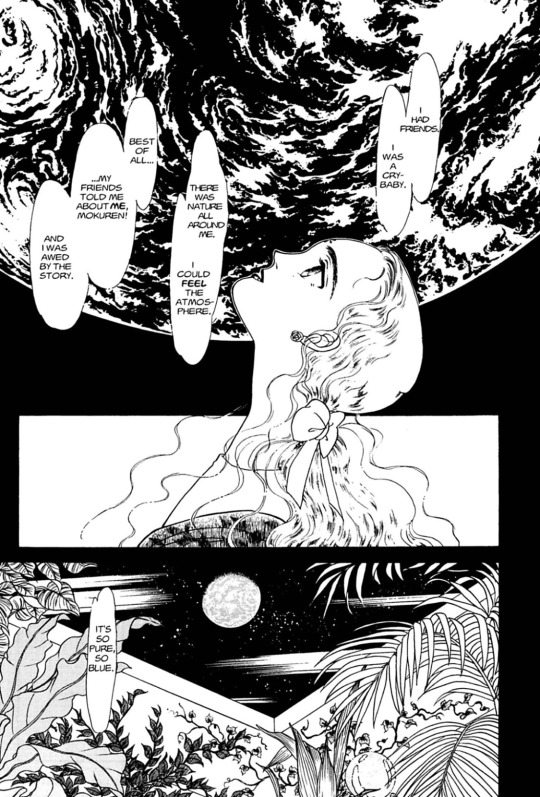
It’s beautiful and soft. I especially love all these scenes in space. Again those influences on Sonic Adventure 2 are so front row in these scenes in particular.
I mean JUST LOOK AT IT:
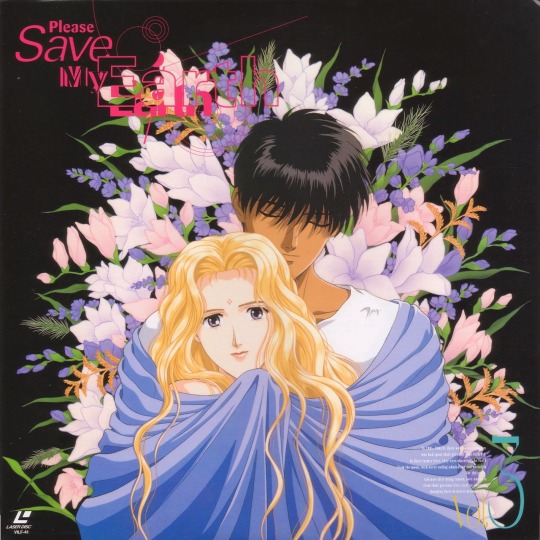
Context clues imply that if you ship Shadow X Maria you will likely love this kind of material.
Okay but obviously it’s more than its influences on Sonic The Hedgehog, so what made the story a fine experience instead of a great one? Especially since I love it’s inspirational material to death. (My first Sonic games were the Adventure games.)
This is Alice. She has just moved to the city from the countryside. She LOVES plants. (Her past self’s name is Mokuren). For simplicity’s sake these are basically the same person. Except the past self is an alien. Present self is not. (Though the same soul is probably a better way to put it. A lot of these characters are going to have duel identities)

Alice babysits a freaking brat named Rin. (I very much do not like this child.):

I like child characters, and I get that this kid is supposed to be annoying, but I just don’t like his cut. He does gross things to Alice and some of it borders on plain harassment. Especially when BOTH SETS of parents start endorsing the idea of her pretending to marry him in response to her almost killing him. Mind you there’s a 9 year age gap. Rin is 7 years old and Alice is 16.
This is what I mean by some of these elements just not aging well. And one could argue this is 80s manga from Japan. I know some folks like to cut Japan some slack on some of this stuff.
I don’t. It’s 2023, the here and now. Being old does not make it ineligible from critique from a modern perspective. And I think the conversation around that makes it more interesting period.
And hey. I can hear you thinking, “Did she just say Alice almost killed that kid?”. Yes I did.
Being a babysitter of a constantly turbulent kid has Alice is fed up with his behavior. She’s spanked him once before but things reach a boiling point when Rin questions her about wanting to date specific other people (we’ll get into this in a bit). When Alice softly challenges this idea Rin grabs a sentimental object to Rin (a plant from her home town she loved so much.), sits horse back style on the balcony railing, and drops the plant to is death several stories down.
While understandably hurt, Alice stupidly slaps the kid and knocks him off the railing. She manages to catch him, but she is unable to pull the boy back over into safety and he ends up also dropping stories down. (About 12-15 stories high)

This has a weird effect on the story where she is ostracized in school because she effectively pushed a kid off a balcony, but her regular group of friends are guilted into being friends with her again??? And it goes back and forth between emotionally punishing her for it and letting her get away with it emotionally. Though undoubtedly she feels guilty. She never feels she made the right decision, but she is being coddled.
While it’s obviously an accident no one would be cool with her, especially in Japan. She also faces no legal repercussions for this. Which I’m not necessarily advocating for accuracy, but it is a bit too ridiculous on that front. Especially when Rin’s mother advocates his feelings to marry her after he wakes up from his COMA. She also apparently wanted to apologize to Alice for slapping her for slapping her kid off a railing? Nah. Nope. Not a thing.
But, hey, that’s manga. Sometimes you just gotta lean in and enjoy the drama like a soap opera. I get it. I mostly mention it to give you an idea of how this story is going to operate over 20 books. This is only PART OF THE SYNOPSIS for volume 1!
Let’s get into WHY that even happened by first introducing a couple more key characters and their “deal”.
On the left with the dark hair we have Issei. His past alien scientist self, which we don’t see yet, is a woman named Enju. I’ll be swapping between pronouns in the future when talking about Enju and Issei.
On the right is Jinpachi. Their past alien scientist self was named Gyokuran. Whom we also don’t see.

To get you quickly caught up:
Enju likes Gyokuran, but Gyokuran was in love with Mokuren, but Mokuren was already engaged with someone named Shion.
So it stands to reason they still like each other? (Low key it sounds like Enju was always jealous and being treated as a back up plan.)

⬆️ This is a lie. I am certain of this in some capacity. It is uncertain if this is played up as a joke or as a very legitimate conflict. (Too early to judge). I also can’t rightly tell if the manga stands behind that statement or not. But it is also extremely gay coded with them in the modern era. They talk about their dream love together DAILY for Christ’s sake. (And low key act it out. Like COME ON.)
If this is being treated as legitimate, what does that make them? As Jinpachi shows some obvious attraction for Alice. Issei implies that “they’re a guy in real life “ so they could see the appeal of Mokuren. I think Issei will have hidden feelings for Jinpachi. Does that make you gay if you’re context for loving that person was originally straight? As his connection is contingent on knowing him through those dreams. Is Issei gender dysmorphic at all? Which body do they prefer? The one that had a better chance to be with the person they love or the one that has a second, but maybe slimmer, chance to be with them now? Did Gyokuran like Enju at all? Because Jinpachi does seem to like Issei in some capacity. And are those feelings only for Issei, or can that be extended to other men? And how does that effect the relationship now???
They both seem to like both their past and current bodies, does that play a unique roll here? What would you call that? It is obviously reincarnation but are they truly reliving those moments or are they simply kinning their own past lives they get to watch like a TV?
I’m aware some of these are weird questions but I can’t help but wonder these as I read. These aren’t questions that will probably be answered for a while and likely not directly. Hopefully they aren’t… poorly answered. I’m interested to see how this manga will handle these topics.
Now. How does ALL THAT relate back to Rin and Alice?
The whole reason why the balcony fight even happened is because Alice obviously kinda likes Jinpachi. And it is obviously reciprocated.
So Rin gets hurt and Alice prays that he wakes up from his coma and he does. Great. I’m gonna mostly skip over the weird engagement because like, already covered why I don’t like that. But the idea is so wild to Alice she straight up just passes out from the mere idea.
Apparently Rin has new intuitive powers. It is unclear how they work. He initially wakes up in tears after, what I assume, is having his own dream of a past life. Knowing this manga’s m.o. even from just the first volume and Shadow The Hedgehog, I would be willing to bet money this little brat is Shion. 🙄
But after reconfirming with his mother that he does indeed wish to marry Alice, we cut to later and he is sneaking out of bed. He goes out to the balcony and just jumps out and lands safely.
He had apparently contacted gangsters??? And then mentally manipulates one of the biker’s motorcycle brakes to fail so he can have a personal chat with the gangster. They literally float in the air together to talk. The manga ends with Rin requesting that the gangster gives him the Tokyo tower. Okay I guess??? It is about aliens. Sure.
In the midst of all this happening Alice has her “reawakening” after fainting from the news of the engagement. (She faints twice from this news and then cries about it FYI)
We see who I assume is Shion and we see Mokuren. The big thing established is that Mokuren is a… Japan nut (Their words not mine). An Otaku. But it is implied (at least in the first book) they that exist in the era of the dinosaurs (With humans not existing yet. Because remember, all the main cast in past lives are aliens)
And she talks about pronouncing her name “The Japanese way” and making oden. It implies she can mentally visit her future body in the present??? Astral projecting? Is that what they call that? Something along those lines. Like she was astral projecting into her future body, so her past self is privy to Japanese culture but other scientists are not? Unclear. Too early to truly judge. I understand wanting to make the character see into the future but I’m not so certain I vibe how they did it? It could’ve been cooler. I think.
“Please Save My Earth” certainly isn’t uninteresting. There is so much to dissect and talk about within even just one volume. Lots of good head canon potential too. It’s a series I want to continue. All the books are rated individually and not as a series as a whole. My initial opinions may change with later volumes. I plan on reading and dissecting all 20 volumes as I consume them so buckle up.
But as is? It’s a weird manga for sure. I could see this being a very particular flavor for a lot of readers. And while I like it, I don’t know if it would be something I would recommend or not until I get a couple more volumes under my belt.
Next: “Please Save my Earth” vol. 2.
(Next review not available yet)
#Please Save My Earth#manga#shojo#shoujo#shojo manga#shoujo manga#anime#80s manga#book one#vol 1#book 1#vol one#sonic#sonic the hedgehog#shadow#shadow the hedgehog#sega#sonic adventure 2#SA2#SoundCloud#Spotify#anime book club#anime-book-club#ABC#retro manga
3 notes
·
View notes
Text

High School Connection (1982) by Kazumi Yamashita
116 notes
·
View notes
Text

The Italian edition of the manga "Lady Georgie" by Yumiko Igarashi
#georgie manga#georgie#ladygeorgie#lady georgie#arthur and abel#arthur#arthur buttman#arthur bateman#abel#abel buttman#abel bateman#georgie buttman#georgie bateman#eric buttman#eric bateman#mary buttman#mary bateman#lowell gray#lowell j gray#elise dangering#duke of dangering#yumiko igarashi manga#igarashi yumiko#yumiko igarashi#australia#19th century#80s#80s manga#80s shojo#80s shojo manga
6 notes
·
View notes
Text

#vaporwave#manga#polygon1993#glitch art#anime#anime and manga#anime aesthetic#retro#90s#80s#sailor moon#art#shojo
2K notes
·
View notes
Text
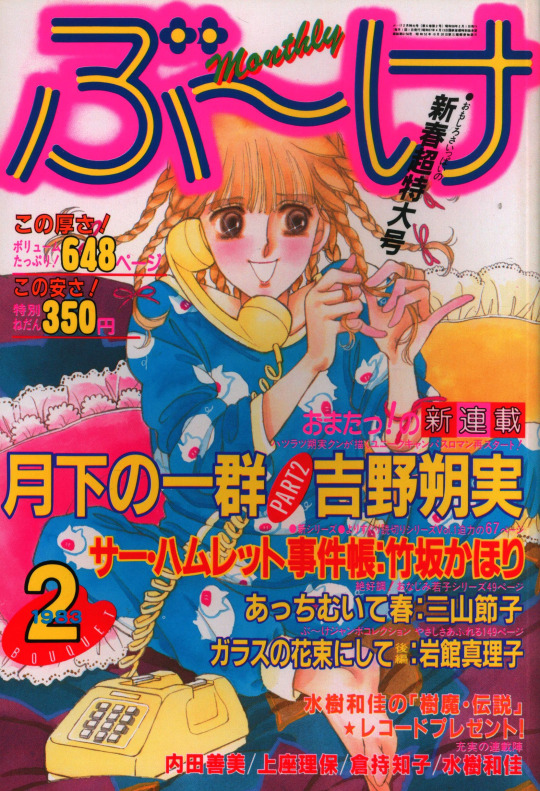
Bouquet (ぶ〜け) / Shūeisha (集英社) / Feb 1983 issue
93 notes
·
View notes
Text

Series: Boku no Chikyuu o Mamotte
Artist: Hiwatari Saki
Publication: ‘Hiwatari Saki Hakusensha Card Gallery 2′ (04/1988)
Source: Scanned from my personal collection
#boku no chikyuu wo mamotte#boku no chikyuu o mamotte#please save my earth#bokutama#sakaguchi arisu#hiwatari saki#saki hiwatari#scan: hotwaterandmilk#postcard book#80s manga#shoujo manga#shoujo#classic manga#retro manga#vintage manga#manga scan#80s aesthetic#manga aesthetic#shojo manga#shojo#sorry i haven't been able to share much lately#beyond scanner issues my health hasn't been great#so yeah#i'll share what i can when i can
97 notes
·
View notes
Text

Aishite Knight, 1982, by Kaoru Tada
The story is about a 18 year old girl, Yakko, who works in her father’s restaurant. One day she meets a lost young boy with a cat, who has been brought up with his elder brother, Go. Go is the leader of an emerging rock band called the bee-hives. When Yakko and Go meet, a romance starts, along with the 80s pop rock music of the 80s.
49 notes
·
View notes